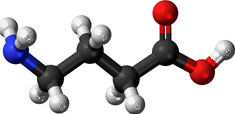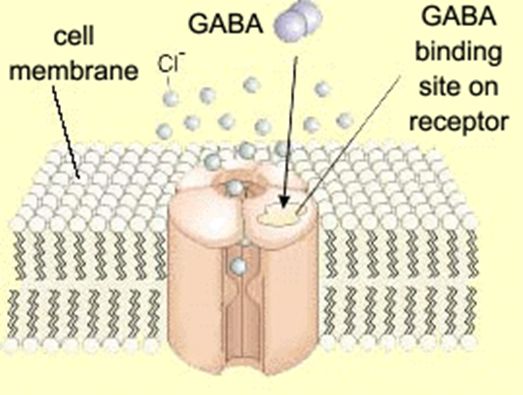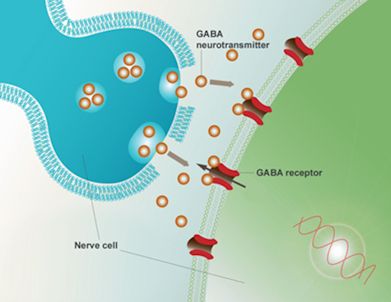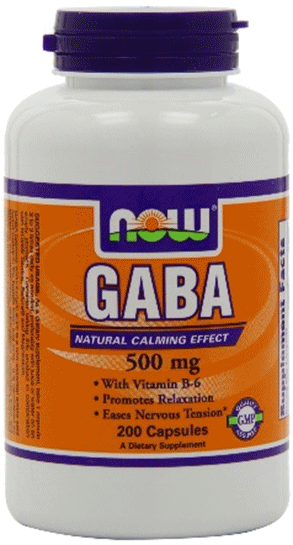 |
Gamma-aminobutyric acid (GABA)A molecule of relaxation...
Gabriella Zanetti
Also available: HTML version.
|
 |
Gamma-aminobutyric acid (GABA)A molecule of relaxation...
Gabriella Zanetti
Also available: HTML version.
|


During those stressful weeks in school or at work, your brain becomes very excited and as a response, your body normally produces GABA to bring your nervous system back to a state of calm. Without GABA, you will increasingly become restless and anxious, and might experience seizures.
GABA is an amino acid which acts as a neurotransmitter in the central nervous system. GABA’s natural function is to reduce the activity of the neurons to which it binds. It inhibits nerve transmission in the brain, calming nervous activity. This can make a person feel more tranquil and give him or her sense of wellbeing.
The nervous system is made up of individual nerve cells called neurons. They serve as the body's wiring. Nerve signals are transmitted through the length of a neuron as an electrical impulse. When a nerve impulse reaches the end of the neuron it can jump over to the next cell using chemical messengers called neurotransmitters.
In the central nervous system, which consists of the brain and the spinal cord, neurotransmitters pass from neuron to neuron.
Neurotransmitters are stored at the end of each neuron. When neurotransmitters reach neighbouring neuron, the neurotransmitters click into specialized receptor sites much as a key fits into a lock. When enough neurotransmitters attach to the receptors, the neuron “fires,” sending an electrical impulse down its length.
GABA is made in brain cells from glutamate, and functions as an inhibitory neurotransmitter – meaning that it blocks nerve impulses. Glutamate acts as an excitatory neurotransmitter and when bound to adjacent cells encourages them to “fire” and send a nerve impulse. GABA does the opposite and tells the adjoining cells not to “fire”, not to send an impulse.


 What would happen if GABA did not exist?
What would happen if GABA did not exist?Without GABA, nerve cells fire too often and too easily. Anxiety disorders such as panic attacks, seizure disorders, and numerous other conditions including addiction, headaches, Parkinson's syndrome, and cognitive impairment are all related to low GABA activity. GABA hinders the transmission of nerve impulses from one neuron to another. It has a calming or quieting influence. A good example to help understand this effect is caffeine. Caffeine inhibits GABA release. The less GABA, the more nerve transmissions occur. Think what too much coffee feels like: that is the sensation of glutamate without enough GABA.
The reason caffeine does this is that other molecules can bind to the neuron near the GABA binding site and influence GABA's effect.
1883: Gamma-aminobutyric acid was first synthesized, was first known only as a plant and microbe metabolic product.
1950: GABA was discovered to be an integral part of the mammalian central nervous system.
 What are the uses of GABA
What are the uses of GABAMany people take GABA as a supplement to improve mood and relieve anxiety. However, there has not been enough research to uncover the side effects and risks of GABA supplements.
There is little evidence that it does anything. Recent medical belief is that GABA will not pass the blood brain barrier. The blood brain barrier is a biologic firewall between the body's general blood circulation and the blood circulation that supplies the brain. It prevents many of the chemicals and drugs which circulate in the blood from reaching the brain. This would mean GABA cannot cross from the body into the brain; consequently it leaves people dubious if then GABA would work.
Nevertheless, people may still take GABA because it could act as a placebo. Also, it may have some affect that hasn't been reported yet, therefore more research needs to be done.
![]()